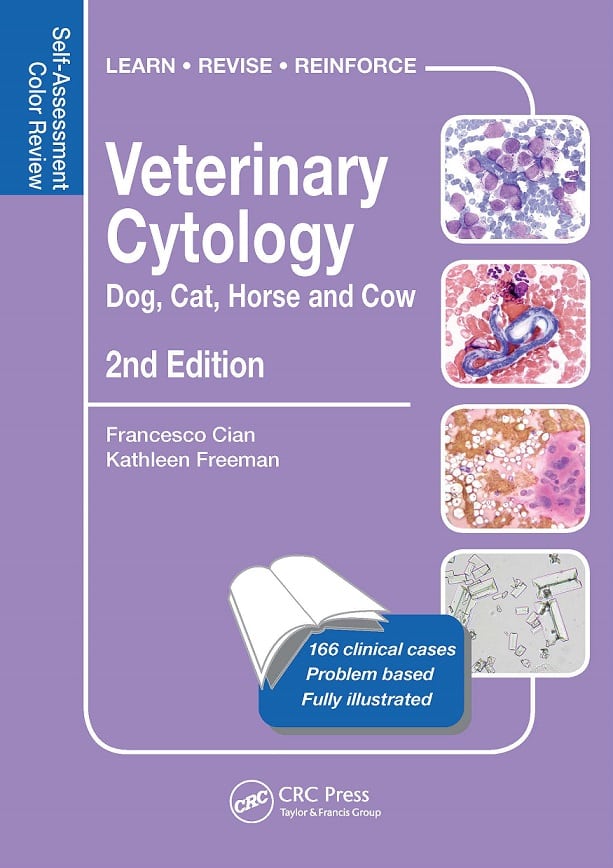Veterinary Cytology Dog, Cat, Horse and Cow Self-Assessment Color Review, 2nd Edition. This book aims to provide a representative sample of cytology cases encountered in a variety of diagnostic situations.
Veterinary Cytology Dog, Cat, Horse and Cow Self-Assessment Color Review, 2nd Edition

It is not an inclusive text covering all conditions but offers a variety of cytology features and patterns from which anyone interested in veterinary cytology can continue to learn and test their knowledge. Bone marrow is covered by only a very few cases, since readers should not be misled and believe that they might be able to interpret a bone marrow from a single cytological field – they also need extensive knowledge and experience in haematology.
The format throughout the text encourages description and interpretation of the cytological specimens represented in the photomicrographs. The exercise of description is one that should not be ignored and, laborious as it may seem to those making their first attempts, it is critical for the development of a discriminating cytologist. The process of description provides a guide to a systematic method for covering the cellular and noncellular material that is present.
It is important to admit when cells or features are recognized but cannot be categorized. Knowledge of the range of ‘normal’ for various sites and types of specimens is critical. The recognition of normality provides the basis for recognition of deviations from ‘normal’ and the presence of disease.
It is vitally important that the student of cytology strives to obtain and examine a variety of specimens that represent ‘normal’ for the age, system, physiological status, species, method of collection, method of cytological presentation and staining. Only by an appreciation of the range of presentations that can represent a ‘normal’ collection can one become comfortable with the various types of specimens and their interpretation.
